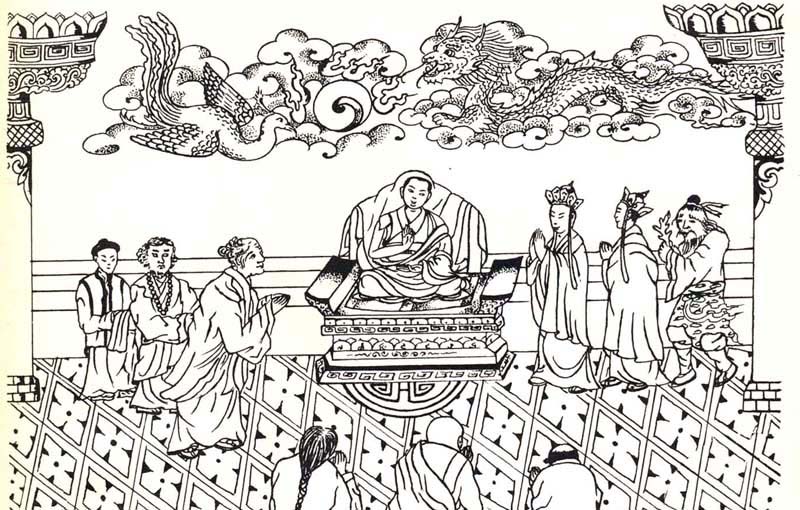The years following the death, or disappearance of the Sixth Dalai Lama are ones of some confusion in Tibet. The Dalai Lama appointed by Lhazang Khan was not accepted by the Tibetans. As we have seen, they appointed their own child in the usual manner. Unfortunately, this child was in the hands of the Emperor of China.
Lhazang Khan’s government in Lhasa was very unpopular, and trouble was not long in coming. In 1717, a Mongol tribe called the Dzungars invaded Tibet, supposedly to put the right Dalai Lama on the throne, although they did not have the child with them. They attacked Lhasa and captured and killed Lhazang Khan. In these actions they had the support of most Tibetans. But when the Tibetans realized that the Dzungars did not have the rightful Dalai Lama with them, they began to grow angry. And when the Dzungars started to plunder the Buddhist temples – stealing the gold images and ordering the monks around – this anger turned to hatred. The Tibetans began to look for help from China.
In 1718, The Chinese Emperor sent an army to Tibet, which was bloodily defeated by the Dzungars outside Lhasa. In 1720 he tried again, and this time his army was successful. The Dzungars were driven out of Tibet and the longed-for Dalai Lama was escorted to the Holy City. The Chinese generals helped to restore order and set up a new government. This government remained entirely in Tibetan hands. You can read more about the government of the Dalai Lamas in the second book of this history.
The Chinese invasion of 1720 had taken place without any opposition from the Tibetans. But for almost 200 years – from 1720 to 1912 – the Chinese were to exert a certain amount of influence in Tibetan affairs. To begin with, a garrison of 2,000 Chinese soldiers was left in Lhasa. Later, these soldiers were replaced by two Chinese officials, known as Ambans with a small escort of troops. These officials had little say in Tibetan affairs, but the Chinese were later to claim that they did. Indeed, the Chinese Communists used the presence of the Ambans in Lhasa as one of their arguments in claiming that Tibet had always been a part of China. You can read more about Tibet’s relations with China, and the events that were to lead up to the tragedy of the mid-twentieth century in the next book.

